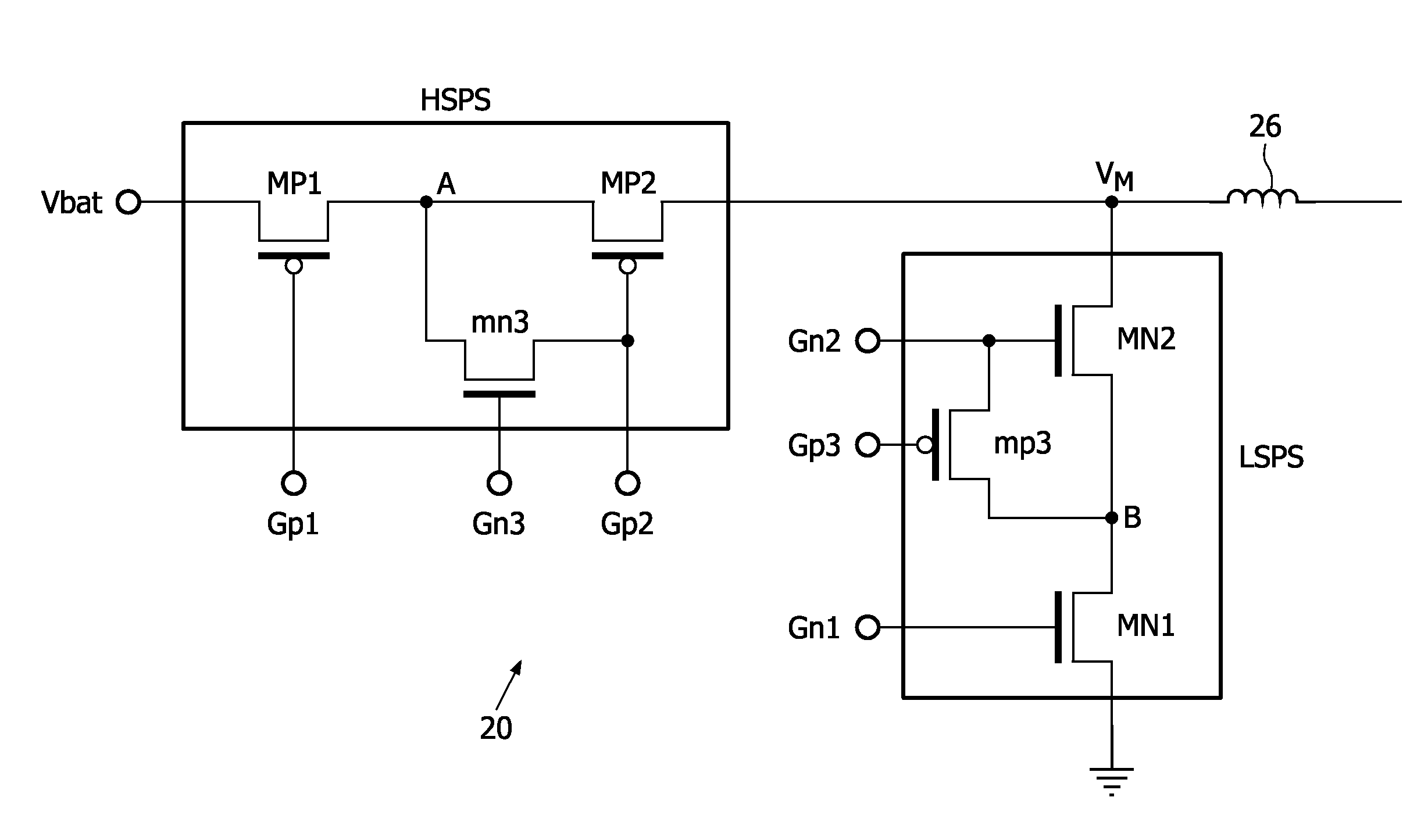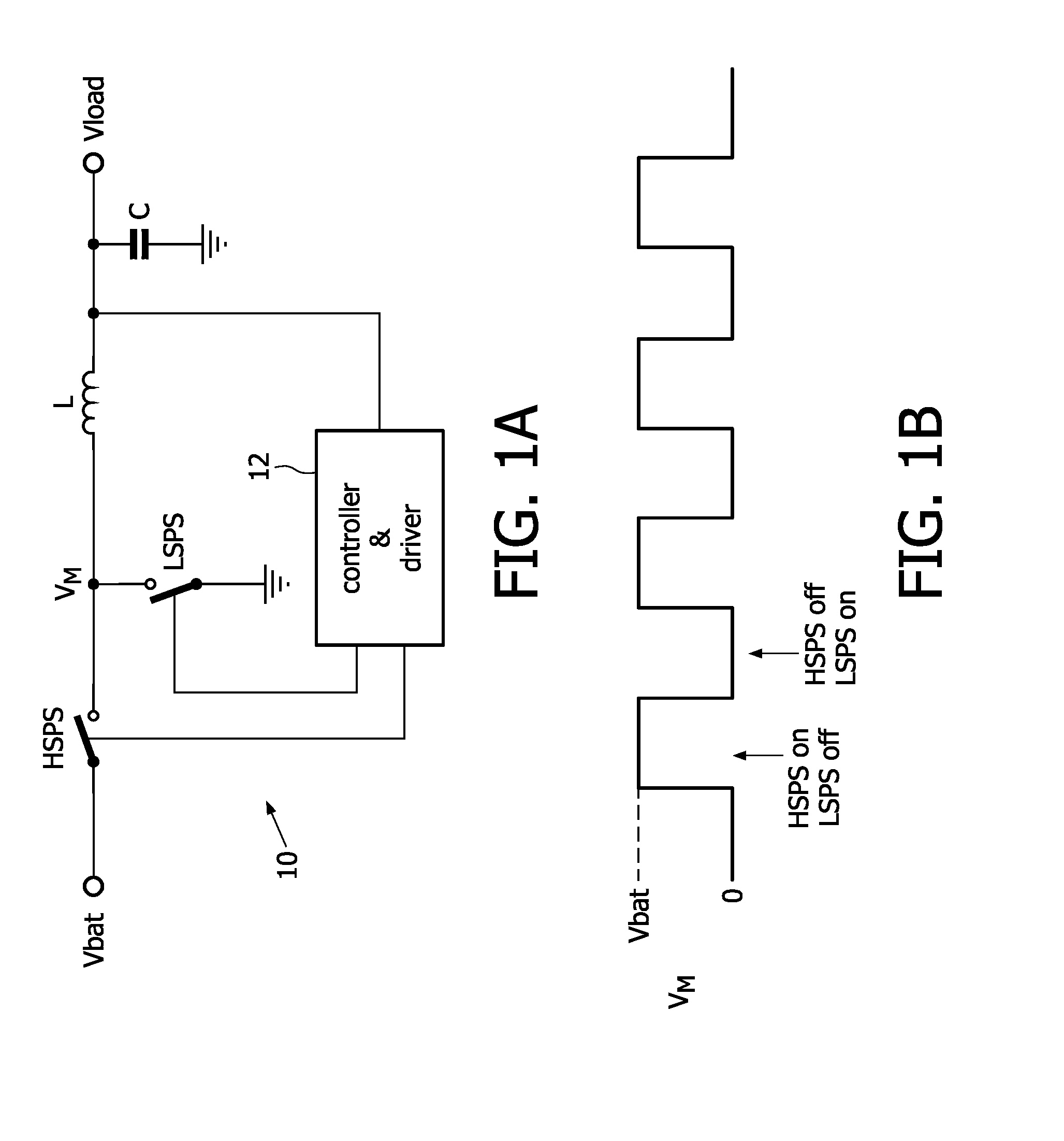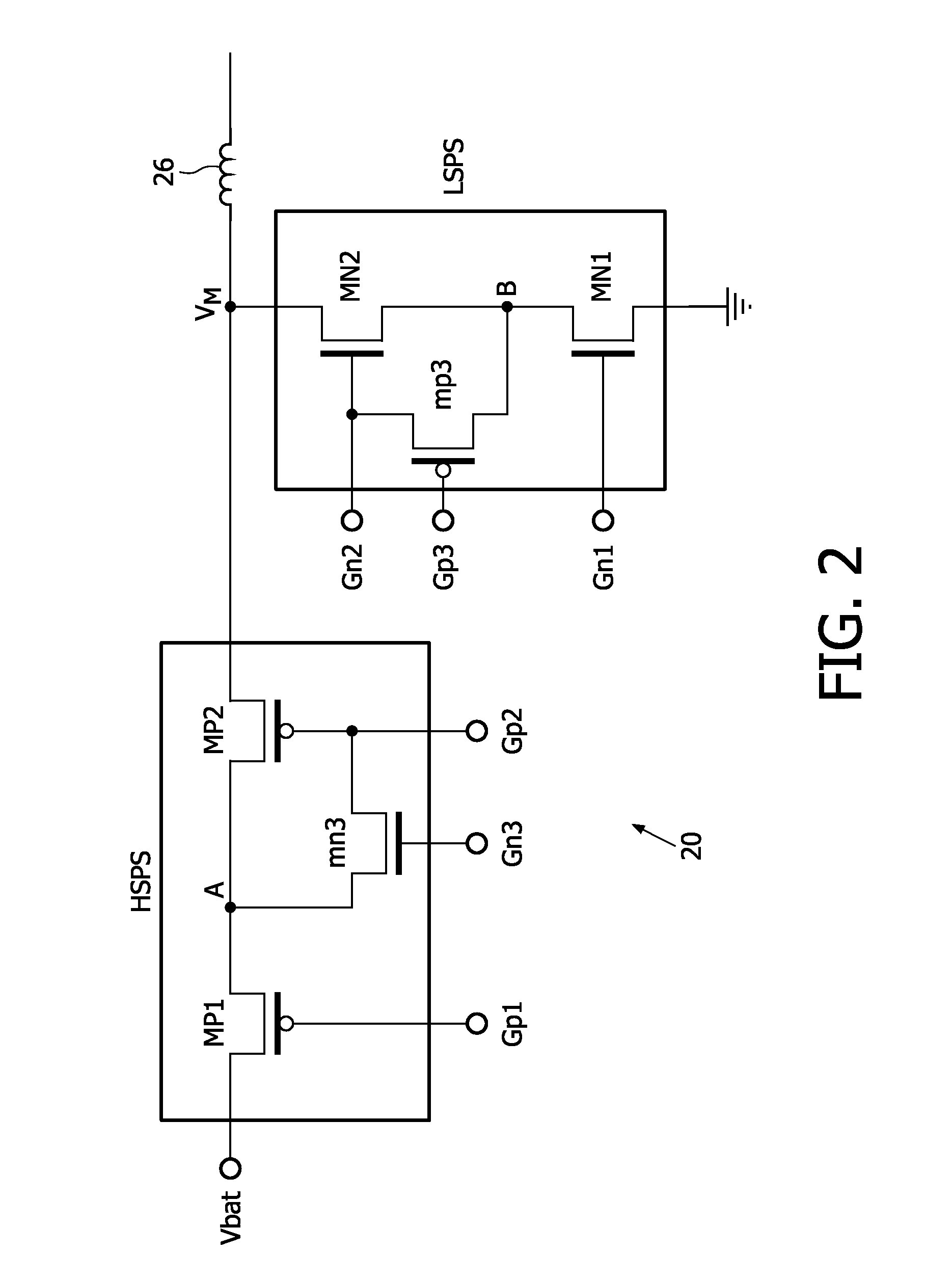High Voltage Power Switches Using Low Voltage Transistors
- Summary
- Abstract
- Description
- Claims
- Application Information
AI Technical Summary
Benefits of technology
Problems solved by technology
Method used
Image
Examples
Embodiment Construction
[0030]This invention explores circuit techniques and proposes a circuit arrangement for realizing high-voltage power switches using standard, low-voltage CMOS transistors. The idea is to distribute the high-voltage over two or more transistors connected in cascading. In this way, a 5V power switch, for example, can be implemented by cascading two switches each using 2.5V transistors. In designing a cascading power switch, some key technical issues have to be solved.
[0031]Cascoding alone does not solve the problem. For example, by connecting two MOS transistors in cascoding, the drain-to-source voltage of both transistors can be halved, similar to the extended-drain MOSFET. However, gate-to-source and gate-to-drain voltage need to be carefully designed to avoid overvoltage, and to drive the power switches on and / or off. In addition, the design should avoid merely shifting the high-voltage problem from the power switch to somewhere else, for example, the switch driver circuit. Another...
PUM
 Login to View More
Login to View More Abstract
Description
Claims
Application Information
 Login to View More
Login to View More - R&D
- Intellectual Property
- Life Sciences
- Materials
- Tech Scout
- Unparalleled Data Quality
- Higher Quality Content
- 60% Fewer Hallucinations
Browse by: Latest US Patents, China's latest patents, Technical Efficacy Thesaurus, Application Domain, Technology Topic, Popular Technical Reports.
© 2025 PatSnap. All rights reserved.Legal|Privacy policy|Modern Slavery Act Transparency Statement|Sitemap|About US| Contact US: help@patsnap.com



